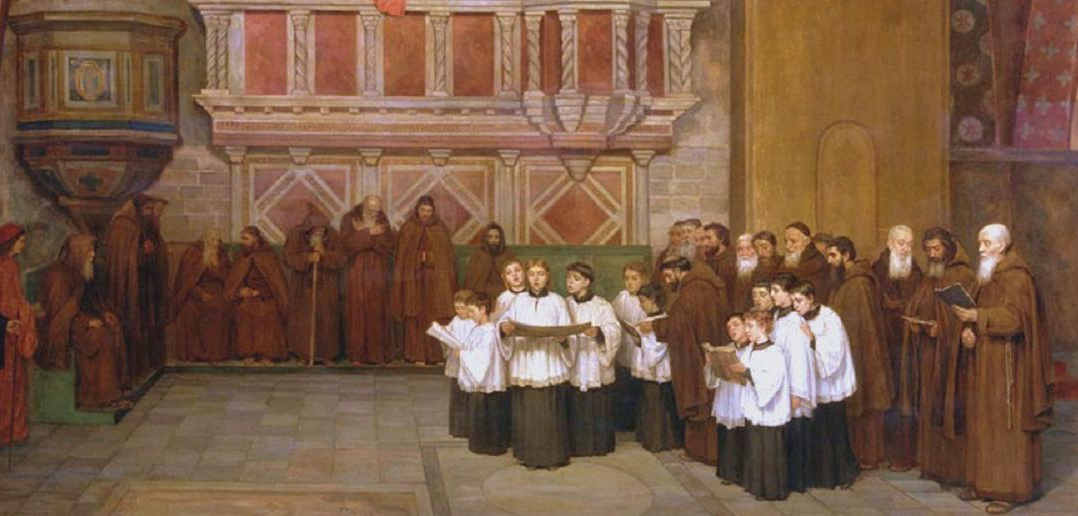
Structured prayer is a hallmark of the Catholic faith and is one of the many endearing attributes that distinguish it from other Christian denominations. Priests and deacons greatly benefit from saying the morning and evening prayers from the Liturgy of the Hours – lauds and vespers. These come from a larger set of prayers designed to be said throughout the day known as the Divine Office. Consecrated religious – nuns and monks – enjoy prayer every office, or hour, of every day. As a Catholic practice, this devotion dates back to St Benedict and his monks in the 6th century. The Divine Office is, admittedly, a bit difficult to learn at first. It changes daily and there are weekly cycles, seasons, propers, commons, and special offices. [pullquote]”Seven times a day I have praised Thee” – Ps 118:164[/pullquote]
In my experience, praying the Divine Office is enriching, but the complexity of correctly following its varying structure is sometimes distracting. I had hoped it would be a more natural progression or advancement from another practice I was familiar with, known as the “Little Office.” The Little Office is much simpler, having the same prayers daily for only three offices. In fact, the Little Office has been an extension or addition to the Divine Office for certain religious orders in the past. It is a simple but excellent devotion that gives us, the laity, structure for our prayer life and provides us with an extension of the sacred liturgy. It connects our homes and our daily lives in a very real way to the life of the Church.
The structure of the Little Office in its modern form as found in most publications is barren compared to the traditional version. Newer versions typically only provide the prayers of prime and vespers under the names “morning prayers” and “evening prayers” respectively. This semantic change may help ease the unfamiliar into the devotion without the confusion of unfamiliar terms, but it also structurally distances the Little Office from its larger and more in-depth counterpart. In addition to retaining the long-standing terminology, the traditional Little Office of the Blessed Virgin Mary also provides more opportunities for prayer. Rather than just morning and evening prayer, the Little Office as it has been prayed for centuries features eight distinct hours, though matins and lauds are typically said together, providing a total of seven distinct occasions of prayer to be said throughout the hours of the day. The hours, or readings, are:
- Matins at midnight
- Lauds at 3 AM
- Prime at 6
- Terce at 9
- Sext at noon
- None at 3 PM
- Vespers at 6 PM
- Compline at 9 PM.
If one happened to miss prime or vespers, it would certainly be possible to recite another hour to make up for it and subsequently fill the day with small liturgical devotions in honor of the Blessed Mother. The hours (so-called) are not actually sixty minutes as one might be inclined to think, but in fact take only about 10—15 minutes each to pray, depending on the liturgical season. During Advent, Lent, and Epiphany, the prayers change a bit here and there to suit the season but not in any way that is overly difficult to follow. My favorite version of the text (and the one I use daily) is The Little Office of the Blessed Virgin Mary from Baronius Press, first published in 2007. This edition follows the 1961 Editio Typica of the Roman Breviary. It also includes the appropriate Gregorian Chant to be used with the Little Office. It has a calendar of feast days, indulgences, commemorations, the Angelus, the Litany of Our Lady of Loreto, and an excellent in-depth explanation of the Little Office. The main text of the book contains the Little Office in English and Latin, side by side:

In the preface of the Little Office from Baronius Press, the Very Rev. Fr John Berg, FSSP, writes:
Devotion to Our Lady is part of the spiritual life of the Church and fulfills her words that all generations will call her blessed (Lk 1:48). The Little Office will help the faithful to pray with even greater devotion to Our Blessed Lady, either privately or in groups (Little Office, vii).
Of course, Our Lady magnifies Our Lord, and uses our prayers to glorify Him and as a means to lift up our hearts to Him. The Little Office is a Marian devotion composed predominately of Scripture – keeping the Sacred Word in our hearts and minds throughout the day. As we read in St John’s Gospel, “the Word was made flesh and dwelt among us” (Jn 1:14). When we recite the Office and meditate on the words of Scripture, Our Lady brings about a mystical presence of Christ within us. St Jerome is commonly quoted as saying, “Ignorance of Scripture is ignorance of Christ.” Thus, Scripture passing through our eyes, out of our mouths, and moving through our minds sanctifies our senses and intellect. The inertia, so to speak, of this devotion will subsequently echo through our souls daily and at the hour of our death.
Sub tuum praesidium confugimus, sancta Dei Genitrix.
[fundraiser_panel id=”2422″ style=”wdf-fresh” show_title=”yes”]


